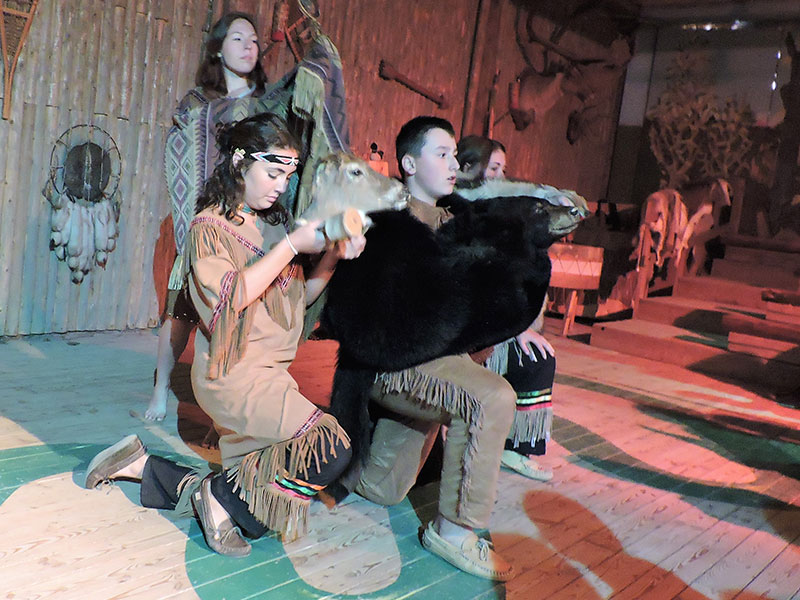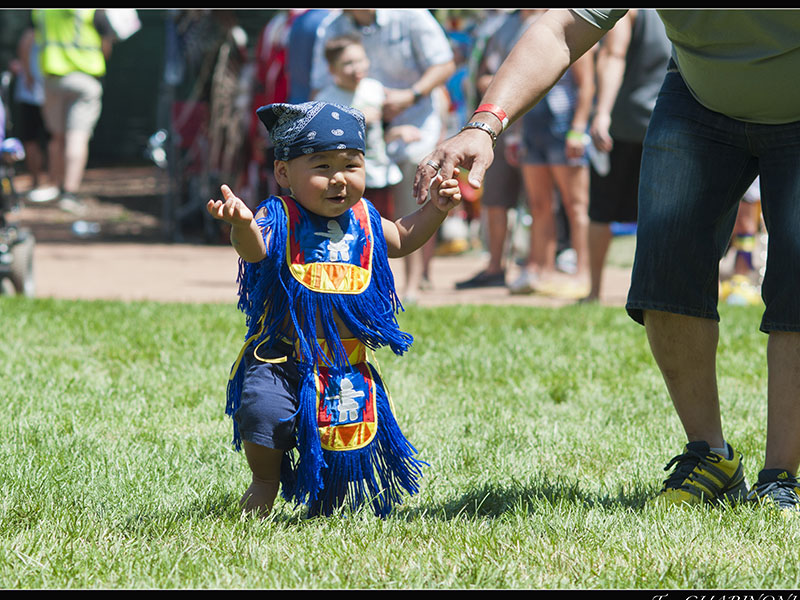Hopping on the shuttle bus outside Quebec City’s Chateau Frontenac, we take off for another world, just half an hour away. Wendake, the home of the Huron-Wendat People, has been a First Nations tourism success story since opening its elegant hotel back in 2008.
Hard to believe it’s been eight years since we were first dazzled by the splendid Hotel-Musée Premières Nations: its soaring lobby, welcoming smell of wood smoke, plush fur pelts and strikingly original artwork.
Over buttery-crisp croissants and coffee in the Restaurant La Traite, I speak with Dave Laveau, general manager of Quebec Aboriginal Tourism and recent appointee to Tourism Canada’s Destination Board. A lot has happened since we first met. Laveau was engaged to be married back then – now he’s a family man. As for aboriginal tourism, “The situation is quite good, to be honest,” he says, with quiet pride. The hotel’s 55 rooms, stunning on-site museum, riverside terrace and endless opportunities to interact with First Nations people, have proved a “real success.” Tourism is flourishing.
Make no mistake, this is no accident. The Wendat (called “Huron” by the French) come from a long tradition of doing business. “It’s in our DNA to interact with the French and the English,” Laveau explains, referring to his people’s skills at trading furs, making canoes and snowshoes. (Both traditional and modern fibreglass versions of the latter continue to be made in Wendake, selling well, especially in Europe.)

Mid-Ontario was home to the Wendat when they first encountered the French in the mid-16th century. By 1697, just 300 remained, their numbers devastated by disease, war and starvation. An estimated 30,000 Wendat had once forged a trading network that stretched from Ontario into Quebec and as far south as Oklahoma. Moving to better trade routes in Quebec was a matter of survival.
Relocating to the banks of the Kabi-Kouba River, they established a community, and have become leaders in Quebec’s indigenous tourism industry. Steps from the hotel is the 2013 “National long house,” a multi-storeyed structure surrounded by a palisade of black spruce. “These trees always grow straight,” I’m told, and indeed the spruce are ramrod-straight, an effective shield that hides the long house from night predators. The garden outside features the “three sisters” – corn, beans and squash – grown by many indigenous peoples.
Inside, three fires indicate that six families would have lived here. Spending a night in the long house is a thrill for hotel guests who choose the experience. Everyone gathers around the fire, while storytellers mesmerize listeners with pre-contact tales and legends; guests sip cocoa or herbal tea before drifting off to sleep, wrapped in sleeping bags and nestled on furs. A fire keeper keeps guard; breakfast is served in the elegant hotel restaurant.
The cultural hub for day-trippers to Wendake is the reconstituted village – Quebec’s most authentic. Open daily from nine to five, this window onto a traditional world offers tour packages (and a four-course lunch) that showcase the old way of life. A tour led by an indigenous guide answers every question that visitors might have.
READ: SALES OF WINES FROM THE WEST BANK CHALLENGES IN COURT
There’s a long house, a sweat lodge, drying racks for fish and meat, and a healing centre that explains the Wendat approach to treating both physical and mental illnesses. If, like me, you’ve ever wondered about “dream catchers,” you’ll discover their true use and meaning here.
Traditional Wendat culture can sound curiously modern. In this matriarchal society, a girl chose her husband (always from a different clan) and if the (monogamous) union worked, a marriage celebration took place within two or three weeks. Inside the long house, the clan mother ruled every aspect of domestic life, even choosing the chief.
Not knowing what to expect in the “dance show” in the agora, we were pleasantly surprised by the high-energy troupe of three girls and one boy. After a traditional cleansing of the agora with the burning of sweet grass, sage and tobacco – to protect both audience and crops – the troupe flew about to the beat of a drum, performing different dances, each with its own meaning and history. At the end, guests were invited to smoke the pipe of peace with a dancer who represented the chief.
It’s exhilarating fun, and just a glimpse of what’s available in new venues a short distance away. A covered outdoor amphitheatre in the Carrefour Artistique features a Wendake cultural performance (June-October) and opportunities to meet with artisans and artists at the Bistro 1760. Nearby, there’s a hillside amphitheatre. Every summer, late June to early July, a spectacular international powwow draws indigenous peoples to Wendake from all over North America.
But summer is just one season. Since we’re in the snow belt, the adventures carry on throughout the year – featuring activities like snowshoeing, dog sledding, snowmobiling and more – plus warm spa days and nights by the fire.
La Traite, the hotel restaurant, has become one of the region’s most popular eateries. Over a glass of bubbly rhubarb water and a delicious vegetarian tarte tatin, I chat with Danisse Neashit, who, like many employees at this First Nations site, is not Wendake. Danisse is Atikamekw and comes from a village further north in Quebec. She enthusiastically takes me around the museum, where important artifacts include “wampum belts” that wove peace treaties into their designs, as well as traditional clothing, canoes and, of course, snowshoes.
The mythological origins of this people (one of 11 First Nations in Quebec) come to vivid life and are reflected in the wares in the gift shop, where we fall into friendly conversation with jewelry designer Yolande-Okio Picard of the Wolf Clan, who explains the symbolism behind each piece she designs.
“We see tourism as a development tool,” said Laveau, “with many opportunities for our kids.” In this tidy and charming village community, where a near-extinct people now number almost 4,000, the band council has bought new land so Wendat youths can remain close to their roots. Tourists who come for the day or stay for a week are guaranteed an authentic taste of indigenous history, culture and an inspiring story of
survival.
